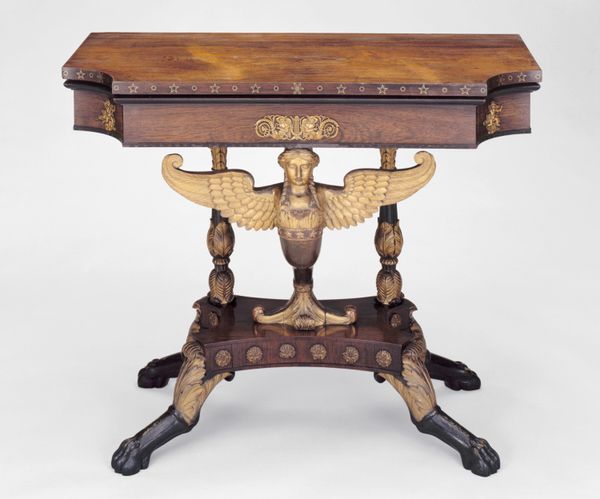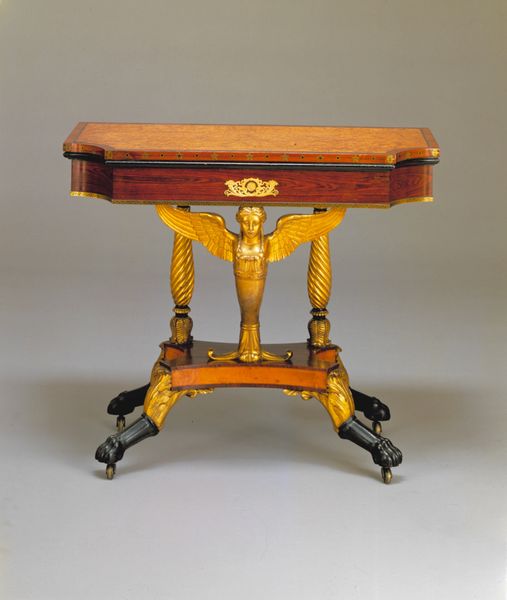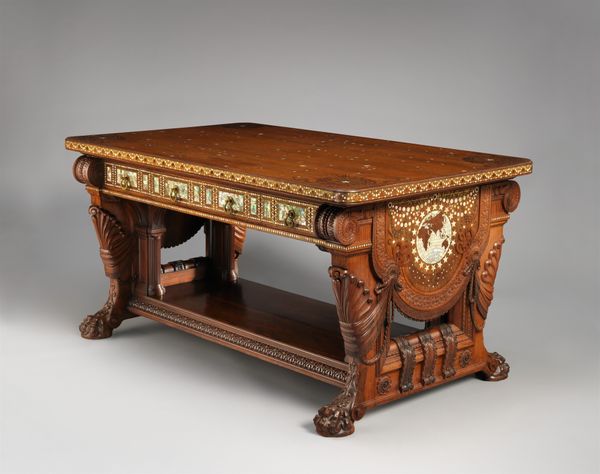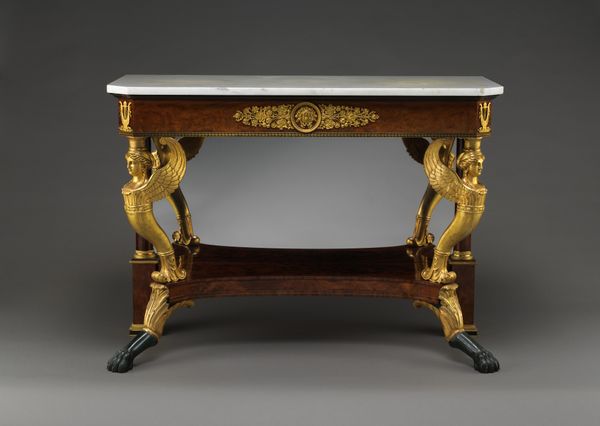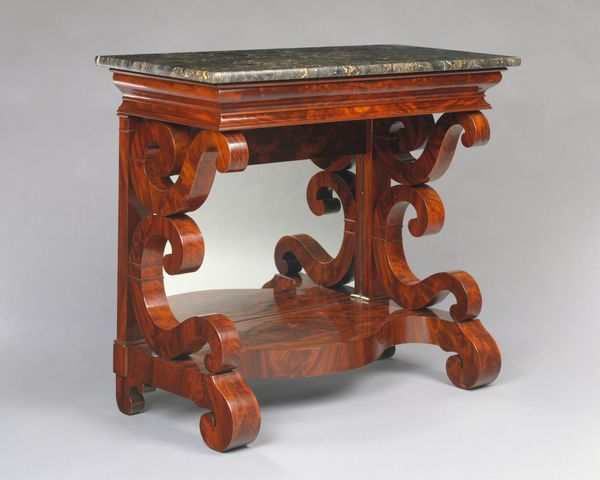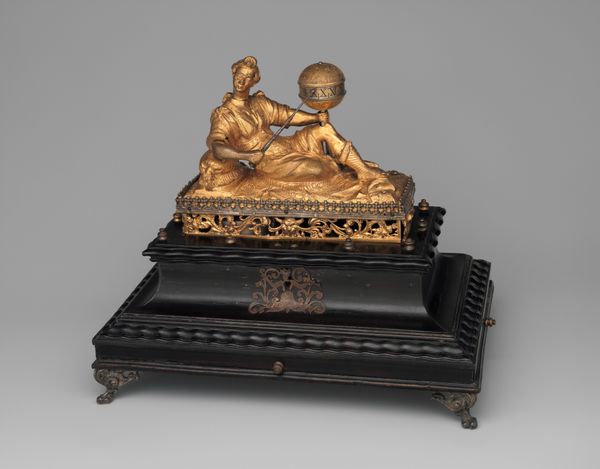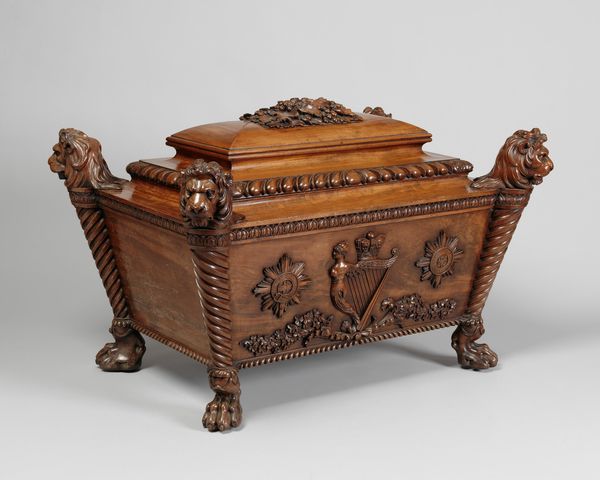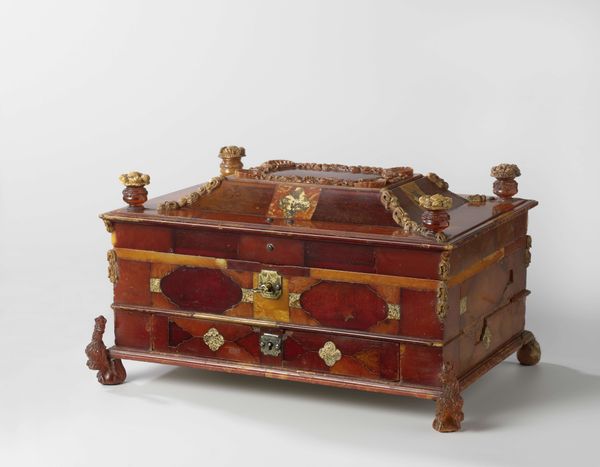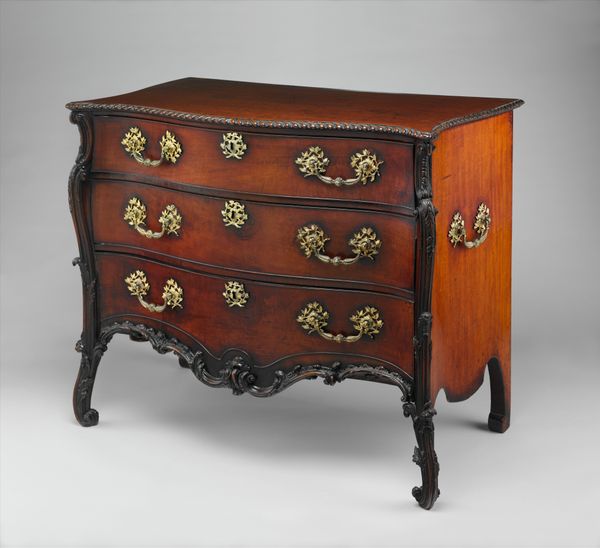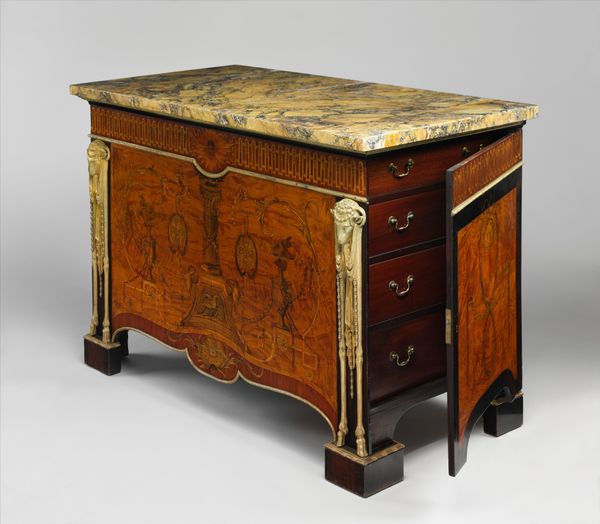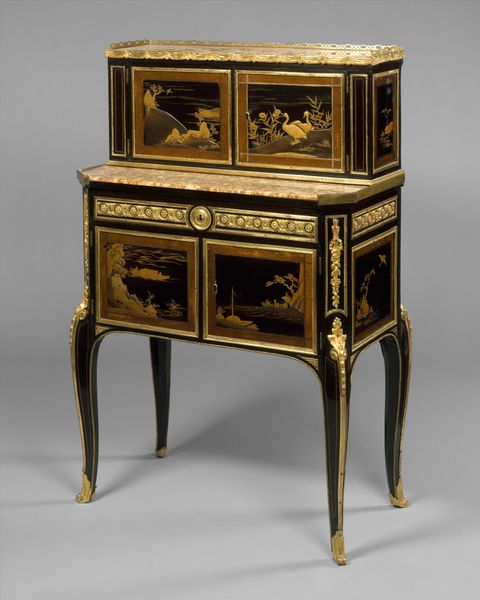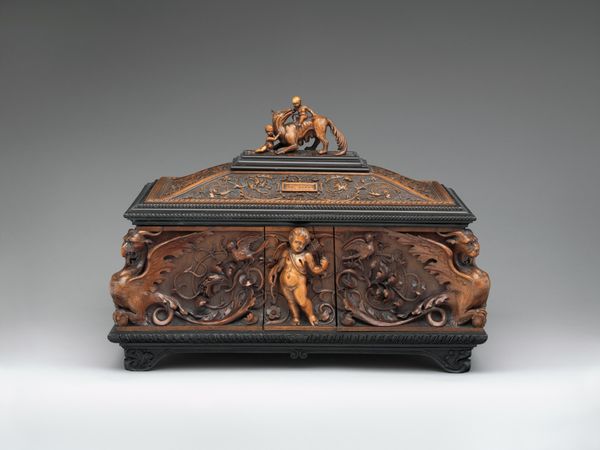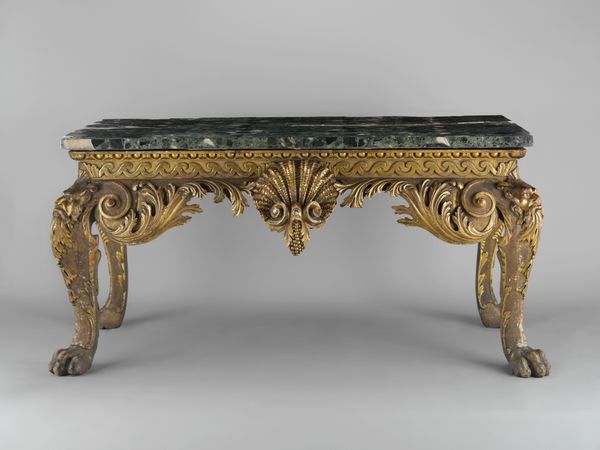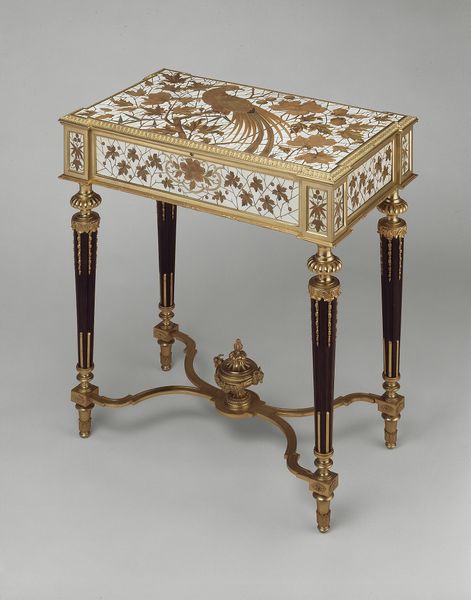
carving, metal, wood
#
neoclacissism
#
carving
#
metal
#
classical-realism
#
figuration
#
united-states
#
wood
Dimensions: 31 1/8 x 36 x 17 3/4 in. (79.1 x 91.4 x 45.1 cm)
Copyright: Public Domain
Editor: So this is "Card Table" from 1817, crafted by Charles-Honoré Lannuier. It’s currently held at the Metropolitan Museum of Art. I’m struck by its kind of opulent balance, that polished wood contrasting against the gold leaf, all resting on those dramatic paw feet. What structural elements stand out to you? Curator: I am immediately drawn to the figural support—the gilded, winged figure. Its placement and form are pivotal to the overall composition. Notice how its outstretched wings mirror the table's rectangular top, creating a visual echo and a sense of harmonious balance, no? Editor: Absolutely, it's a kind of…architectural body, replacing a simple pillar. Are there symbolic reasons for choosing this figure, or is its purpose purely aesthetic? Curator: From a formalist viewpoint, meaning is often considered secondary to the visual language. But observing, the figure functions primarily as a structural element, ingeniously uniting the tabletop with the base. Consider how the eye is led from the table's surface, down the figure, to the stylized animalistic feet, ensuring constant engagement with form. Note, too, the clever alternation of the black columnar support; a rhythmic emphasis on verticality. Editor: It’s like the various parts don't just exist separately; they play off of each other, echoing shape and drawing the eye. Curator: Precisely. The interplay of line, shape, and color is key. How the sharp lines of the table's edge contrast with the rounded form of the figure, for instance. Or consider the relationship between the gold and dark wood… It is all carefully calibrated to produce an impression of restrained luxury. Editor: So even without knowing its historical or cultural context, just by observing the structure and arrangement, we can understand how effective this design is? Curator: Yes. The piece demonstrates an exceptional attention to form, achieving a compelling synthesis of structure and ornament. This method encourages you to focus on how visual elements interact, providing insights often obscured by focusing exclusively on history or social background. Editor: Okay, so the form itself communicates meaning, like balance, tension and a sense of elegance, and understanding those formal elements provides insight into the intent and affect of the overall design. I’ll try and look for that sort of balance between form and purpose in our other works!
Comments
No comments
Be the first to comment and join the conversation on the ultimate creative platform.
